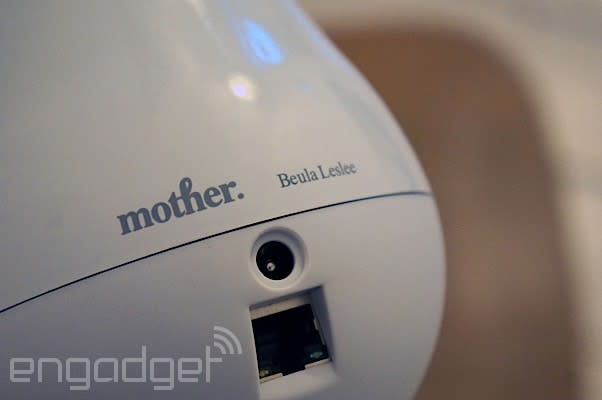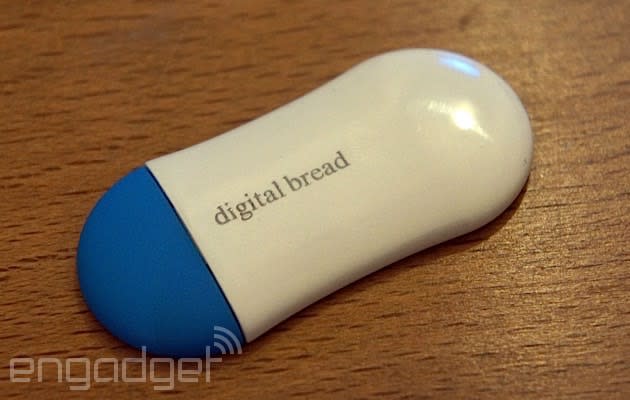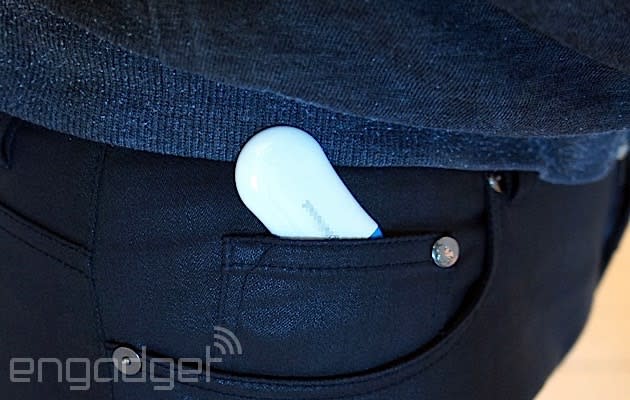Mother can make your home smart, but does it need to be?

Over the last few weeks, every person who has come into my home has gone through the same sort of rough conversation.
"What's that?"
"It's a new device that I'm testing. Do you like it?"
"Not really, it's a bit creepy."
This, then, is what happens when you live with Mother, which has finally begun to ship after getting so much attention when it launched in January. In essence, it's a device that's designed to connect the ordinary parts of your home to the internet, but is that something you really need?
Before we get to that, however, I feel like I should deliver a potted history about its creator before I talk about Mother itself. You see, the product is the brainchild of Rafi Haladjian, a serial entrepreneur who founded one of France's earliest ISPs before going on to build the Nabaztag. The device was a short, white plastic rabbit that could send and receive MP3s, deliver the weather forecast, stock reports, RSS feeds, e-mail alerts or act as an alarm clock. Additionally, the device was a "platform," enabling others with programming chops the freedom to create separate applications for the unit. In short, it was one of the first Internet of Things devices, before we had any idea what that term really meant.
I always imagined that Nabaztag was the sort of device you'd find adorning department store catalogs and design magazines, but very few people actually buying one. That was borne out, too, since the company went bust in 2009 and, after being bought out by Mindscape, the product was essentially killed off in 2011, although it was later resurrected as the Karotz. I think the biggest problem with the gear was that it had a nice concept and could do lots of things, but didn't have a unique selling point that would enable the concept to take root in someone's mind. Sure, there are plenty of gadgets that do multiple things at once, but normally you buy a device to do a job, and everything else is gravy. For instance, Roku may be a smart TV platform and offer motion gaming, but I bet most people buy it as a Netflix box and discover its broader functionality from there.

I mention this because Mother is, just like Nabaztag, an internet-connected hub for the devices in your home. This time around, the box comes with a quartet of little plastic sensors, called Cookies, that use low-power radio to push information back to Mother, which then relays that data to the internet. The Cookies contain a 3-axis accelerometer and a thermometer, which you can then use to make "dumb" objects smart.
So, for example, if you taped a Cookie to your front door, you'd get a smartphone notification telling you every time it was opened. If you had small children, you could attach a sensor to a cupboard where you keep cleaning chemicals so that you'll know if the rugrats are trying to drink your bleach. You can even stick a Cookie to everyone's toothbrush, so everyone in the house can participate in a competitive tooth-brushing league, or to remind you to take your pills, track your sleep or even use one as a rudimentary pedometer. In essence, the hardware's potential uses, the limits of which are mostly governed by your imagination.

In the retail box, you'll get one Mother unit, four Cookies, five CR2016 cell batteries, three cookie holders, two fastening straps and some sticky putty. You plug Mother in via Ethernet to your home router, and began the online installation process, which automatically detected the hardware and got everything running in minutes. One thing to add, however, is that my home office is two floors away from my router, so if you want to save a lot of needless stair-climbing, take a laptop and sit down close to the device. It turns out, however, that while the system tells you to place each Cookie beside the unit to install an app onto it, its reach was sufficiently wide that I could chop and change the devices from my desk.
Everything here has been designed to humanize and simplify what would otherwise be quite a dry internet of things platform. For instance, rather than your Mother getting a unique identifier code, it has a name, as does each Cookie. The names are randomly chosen, Salty Lychee, for instance, but does help to make everything a little more convivial than just "Unit One" etc.
Installing one of the apps created by Sense is also tremendously easy, just pick one of the 14 options currently available and after a few clicks, you'll be up and running. Installing the pedometer app, for instance, required me to provide my height, gender and weight, and two minutes later, I had a pedometer. A further few clicks, and that same piece of hardware had turned into a door sensor, and then a bed sensor to monitor my sleep!

Once I'd finished beaming with delight, I shoved one Cookie into my pocket to track my steps and another under my bed to monitor my sleeping. Surprisingly, both did a significantly more accurate job than I was expecting, and you can even activate and deactivate silent alarms and alerts depending on your needs at the time. Some of the information can be pulled from the mobile app, but for an in-depth look, you'll be using the website.
All in all, I really like Mother, from its design (even the blank, smiling face grows on you) through to the modularity and adaptability of it. Programming each Cookie was ridiculously simple and I was surprised at its accuracy given the limited tech inside each unit. At the risk of sounding twee, the best word that I can use to describe this device is neat.
The problem, and I'm sure a lot of you will have worked it out by now, is that Mother retails for €299 / €290, which is a lot for a neat piece of kit. It's even more for a jack-of-all-trades accessory that serves no singular purpose in your home. Sure, a standalone pedometer might cost you between $50 or $100, but it'll offer you significantly more functionality. It also probably won't be tied to a home-based wireless hub to feed data to the cloud.

Then there's the question of how many more new applications are coming, since of the 14 on offer, three are listed as "coming soon" and several of them do little more than the same job in a different scenario. For instance, did we really need a Coffee app that monitors how many times you use a coffee machine (assuming that you have one in your home) that wouldn't have been solved just by a generic "vibration tracking" option? Would you really consider strapping one of these to a toothbrush, given how wide and flat it is? Even the medicine reminder requires you to attach a cookie to each bottle or blister pack you use, requiring a lot of effort to chop and change each week.
In conclusion then, there's nothing wrong with Mother, and I wish it all the best. I do think, however, that it's a nice idea, brilliantly executed, that runs out of steam before you're even out of the store. Imagine it, once the salesperson has told you the trick about the bleach cupboard, you start to wonder what, if any other applications you could use this for - and come up short. I have nothing but good things to say about this device, but I really don't think anyone should be buying one until it solves the fundamental questions at its heart.











